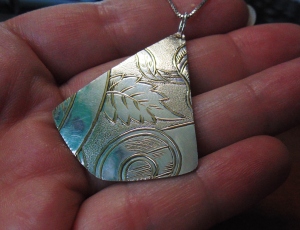“It’s actually a good thing you’re feeling depressed”, I find myself saying to clients more and more lately. Of course, I don’t mean this comment literally, this is not an expression of some sadistic joy at another’s suffering — and I must immediately expand upon what I do mean by it. This is what this post will be about — something I truly believe about depression and something that seems to go against the grain of much of the social media’s portrayal of it. There is much being said and done for helping people speak up about depression, to be more open about it rather than hiding it as some terrible personal failing. This is a much-needed, welcome turn of events.
However, the thinking still seems to revolve around seeing depression as an intruder, an unwelcome guest that must be eradicated. Yes, coping with the day-to-day experience is something that one needs to figure out when the weight of depression won’t let her or him get out of bed, or go to work, when the fatigue and the self-loathing seem to take over the entire awareness of the person’s existence. But to me, the goal of this coping is not to find a way to slay the monster, to “beat it”, and to return to life as normal. Coping skills are important for the sake of being able to function, but actually addressing depression means something else entirely. Whether or not medication needs to be involved (and medication can indeed be crucial), depression has a message coming from deep within the individual, that needs to be truly heard and heeded in order to truly work it through.
This is why I titled this post “Depression’s Call”. It is not meant to minimize the immense suffering that depression often entails. And, it is not meant to minimize the importance of finding ways to take care of oneself, through small daily actions, therapy, and possibly medication. But depression has within it a deep call. It is a message, being delivered from the psyche and the body, that something needs attention. In my experience both personally and as an analyst, this “something” is not conscious. Depression becomes a kind of symbol, a symptom that points to something unconscious that needs to be addressed and brought to light. More often than not, it’s an entire constellation of issues, reaching back to childhood, or possibly to a trauma or a loss years ago. When not fully dealt with (or, as the case often is, when never seeing the light of day at all), it sits within our psyches and bodies underneath the surface, and colors the world around us.
It takes a great deal of energy to contain our inner experience. When growing up, one’s experience is not held, mirrored, and validated, the child internalizes all kinds of messages that then become part of her or his “template” for how people and the world are seen. For a typical and not seemingly traumatic example, when, say a father says to his daughter to “stop moping” when she is upset about her friend moving away, she learns that her feelings are too much for others to handle, that she is overwhelming to others, that she needs to shut off her natural response in order to take care of important others in her life. As children, our parents are our whole world, so we will form a template that doesn’t take into account the idiosyncrasies or personality issues of our individual parents — the template becomes wholesale. And so, to continue with this little girl who has been told to stop moping ( likely over and over and over in many other instances), her template will contain this complex message that her feelings are bad, wrong, overwhelming to others, and a nuisance to be gotten rid of. She will unconsciously begin to do as she is told, in order to maintain the connection to important others in her life. This takes immense amounts of energy to live this way, even though this energy is expended unconsciously.
Enter depression. The now-adult little girl’s psyche and body are exhausted from this labor of suppressing her true feelings. By now she may not even know she’s doing it, and how long she has been doing it, or why. All she knows is that she is depressed. And this is why I see depression as an important messenger.
Heeding depression’s call means looking deeper, beyond one’s current circumstances, and beyond finding ways to feel better as soon as possible. She may not feel better right away in a literal sense, but when finding that thread of discovering the ways in which her psyche has been working so hard to maintain the kind of self that’s been required of her, she may feel a sense of relief, a direction to follow, a way through. Suffering is torture, it can be near-unbearable for some. Suffering needs compassion, support, mirroring, and humanness, a “True Other” (Winnicott’s beautiful term referring to the presence of someone who truly sees and resonates with the person, relating to them in an authentic way that feels like exactly what they needed in a given moment.) But depression also needs more. It calls us to go deeper, to look beyond the immediate, to go deeper, and, essentially, to transform.
Seen in this light, depression’s call is a gift — hence that strange statement at the beginning of this post that I have said to clients. The fact that one recognizes she is depressed is an inordinate potential. So many walk through life without being aware of being depressed — getting through the day, binge-watching TV shows, even going out and seemingly having fun, while the psyche suffers under the pressure of those childhood templates. But when one becomes aware of depression, it can become a catalyst for discovering these templates, for challenging one’s patterns, perceptions of oneself and the world, and for truly embodying one’s True Self. The journey is not easy, and my goal here is not to deify depression — my hope is to share the deeper, urgent call that it represents and the potential it holds.



